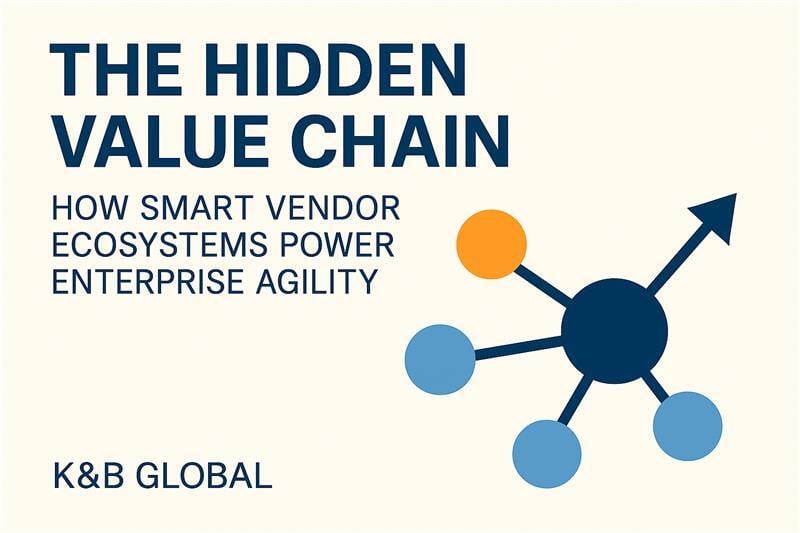
It takes a lot to keep an enterprise org running.
Your IT team works hard to deliver on their jobs, but their dedication to individual performance has an unintentional downside: value-draining myopia.
Speak with a vendor management expert
It’s easy for IT leaders to get focused on managing departments and forget to manage to the contracts of your (many) vendors. This is especially prevalent when you rely heavily on outsourced providers. However, the best-performing IT departments always keep their sights on the contracts. Here’s why that’s important.
When Daily Operations Assume Priority
Your IT team typically focuses on technical delivery rather than on managed outcomes. In fact, your technical teams may not even be educated or experienced with handling various types of vendor engagements. As a result, your IT managers treat vendors more like staff augmentation than a managed service. Frequently, this leads to dissatisfaction with the performance of your significant, more "strategic" vendors.
For vendors to deliver the right results – outcomes that are probably already detailed in the contracts – your business needs a structure that allows vendors to be managed the right way.
Typically, you have technical roles managing specific vendors. These technical roles tend to focus on maintenance (i.e., getting their own jobs done and keeping vital systems running). Rarely do these staffers contemplate strategy and continuous improvement. A gap forms between tech delivery and business outcomes, and it can be challenging for your teams to hold vendors accountable for all the right things. This vicious cycle ultimately diminishes your vendor relationship and drains the actual value of the contracts you worked hard to negotiate.
The Butterfly Effect in IT Vendor Management
You're probably familiar with the butterfly effect (aka chaos theory), which posits that “a small change in one state of a deterministic nonlinear system can result in large differences in a later state.” When contract details are ignored, your IT org suffers from the butterfly effect.
It can play out something like this: a project-level manager feels the vendor isn't providing the right skills and demands a change in personnel or resources delivered. However, that change means the vendor must adjust its overall delivery and now can't manage its own resources in the way it prepared initially for the contract. Friction is brewing between your staff and the vendor because the requested change potentially means the vendor won’t be able to fully meet future expectations.
It’s common for any staff under pressure to adjust the resources a vendor delivers, but these reactions and additional specific demands impact the vendor’s ability to work within its originally allotted budget. Now, the vendor is challenged to show your executives a declining cost structure over the course of the contract because daily working operations prevented them from achieving it. The butterfly flapped its wings on one end of the delivery spectrum, and now there’s a hurricane brewing at the highest, contractual level.
Avoid Unrealistic Expectations of Your Implementation Staff
The catch-22 of this whole scenario is that issues like the one described above arise because your boots-on-the-ground staff have a focused job and they want to succeed at their jobs. And you want them to succeed at their jobs. However, that narrow focus hinders their ability to consider strategic business outcomes. While they concentrate on adjusting vendor resources to execute specific tasks, someone must recognize how all these changes impact the company’s current and long-term value derived from the contracts.
So, how can you ensure your IT org is managing to its contracts? You need someone who can analyze, navigate, and consider the multiple components of these complex vendor relationships. The most effective way is an experienced advisor who will be able to see these critical layers of vendor deals:
- The layer that understands enough of the technical detail: These are the daily execution requirements, such as the needs and expectations of your implementation and execution teams.
- The layer that understands SLA management and innovation advancement: This must be someone who can push the vendor for credits, updates, revised terms, or penalties; someone with the expertise to manage change requests and cost adjustments. This person should also be able to pull the right levers for continuous improvement and innovation, which are frequently included in SLAs but fail to transpire as envisioned.
- The business impact layer that analyzes and considers all the financial implications to the bottom line: This layer accounts for and ensures ultimate strategic value of the vendor relationships.
Having a consultant oversee this contract and vendor management also avoids any setbacks related to internal churn. In other words, staff resource changes don’t exhaust institutional knowledge about the contracts and vendor relationships.
Make sure a butterfly flapping in your IT department doesn’t cast a hurricane over your entire business. I’m happy to discuss some of the situations we’ve seen result from businesses failing to manage to their contracts, and better yet, how we addressed those situations and turned them into value and growth drivers. Reach out to me at here and let’s talk about it.
You can also read more about the strategic importance of vendor management here.


